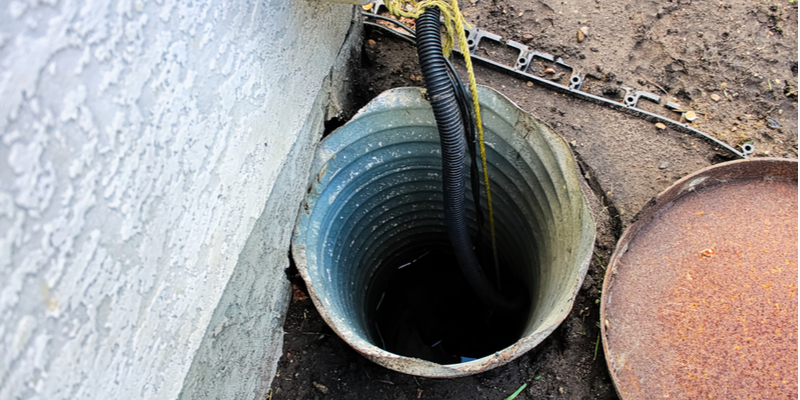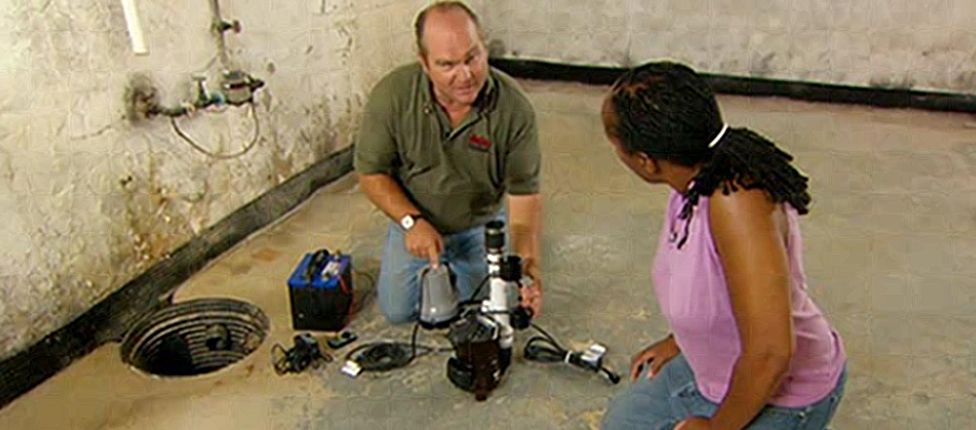We've found this great article involving Keep Your Sump Pump Clean, It'll Keep You Dry below on the internet and figured it made sense to talk about it with you in this article.

Sump pumps are vital components in lots of homes, especially in areas prone to flooding or extreme moisture. They aid avoid water damage by effectively getting rid of excess water from cellars or crawl spaces. Nonetheless, like any other device, sump pumps need routine maintenance to ensure they operate efficiently when required one of the most. Cleaning your sump pump is a vital part of its maintenance, and recognizing how to do it correctly can save you from expensive repair services and possible calamities.
Intro
Keeping a tidy sump pump is important for its correct functioning and durability. Disregarding this essential task can cause obstructions, breakdowns, and eventually, water damage to your property. For that reason, learning just how to clean up a sump pump is essential for homeowners that rely on these tools to keep their basements dry and secured.
Comprehending the Sump Pump
Before diving right into the cleaning procedure, it's essential to have a fundamental understanding of just how a sump pump works. Usually installed in a pit or container below the cellar flooring, a sump pump consists of a number of vital components, consisting of a pump, a float button, and a discharge pipe. When water collects in the pit, the float button turns on the pump, which then pumps the water out via the discharge pipe, away from the building's foundation.
Indicators of a Dirty Sump Pump
Understanding when your sump pump needs cleansing is essential for preventing possible malfunctions. Some usual signs that suggest a dirty sump pump consist of weird noises throughout procedure, decreased water circulation, and visible debris in the pit. If you see any of these signs, it's essential to clean your sump pump immediately to stay clear of any kind of further problems.
Getting ready for Cleansing
Prior to you start cleansing your sump pump, it's vital to take some safety and security preventative measures. Start by shutting down the power to the pump to avoid any electrical mishaps. In addition, wear ideal protective gear, such as gloves and goggles, to secure on your own from dust, particles, and possible virus.
Detailed Guide to Cleaning a Sump Pump
Turning off the Power
Begin by separating the power supply to the sump pump to stop any kind of accidents while cleansing.
Removing Particles and Dirt
Use a pail or an inside story to get rid of any visible particles, dust, or debris from the sump pit. Dispose of the debris properly to avoid it from obstructing the pump or the discharge pipe.
Cleansing the Pump and Float Change
As soon as the pit is clear of particles, meticulously remove the pump from the pit. Check the pump and the float button for any indications of damages or wear. Make use of a soft brush or towel to clean the surfaces and eliminate any type of gathered grime.
Flushing the System
After cleaning the pump and float switch, flush the sump pit with clean water to remove any remaining dirt or sediment. This will certainly help ensure that the pump runs efficiently and effectively.
Checking for Proper Performance
Prior to re-installing the pump, execute a fast examination to make certain that the float switch triggers the pump appropriately. Put some water right into the sump pit and observe the pump's operation. If every little thing is working appropriately, you can reassemble the pump and reconnect the power supply.
Upkeep Tips to Maintain Your Sump Pump Clean
Along with routine cleansing, there are several upkeep ideas you can follow to keep your sump pump in optimal problem:
Conclusion
Cleaning your sump pump is an important element of its maintenance and ensures that it operates effectively when you require it one of the most. By complying with the steps outlined in this overview and integrating routine maintenance right into your routine, you can extend the life-span of your sump pump and secure your home from water damages.
6 STEPS ON HOW TO CLEAN A SUMP PUMP PROPERLY
UNDERSTANDING SUMP PUMPS
Your sump pump plays a crucial role in protecting your home by managing and removing excess water. It primarily functions as a “shield”, guarding your basement against the damaging effects of water accumulation. The pump is housed in a sump pit in the lowest part of your basement, and its job is to pump out any water that collects there.
During heavy rainfalls or when snow melts rapidly, water can infiltrate your basement, posing potential risks like flooding, structural damage, and harmful mold growth. Here, the sump pump springs into action, pumping out the intruding water and directing it away from your home.
SAFETY FIRST
Before cleaning, remember to prioritize safety. Disconnect the sump pump from the power source to prevent any accidental electric shocks. Also, wear sturdy gloves to protect your hands from any sharp or dirty components within the pump.
REMOVE THE SUMP PUMP
After ensuring your safety, the next step is to remove the sump pump from its pit. Doing this might require careful maneuvering as you don’t want to damage any pump components. Once removed, clean the sump pit to remove any accumulated debris or sludge.
INSPECT THE PUMP
Inspect the pump for any visible signs of wear or damage. Check the power cord, float switch, and impeller housing. If any components look worn out or damaged, consider replacing them to ensure optimal performance.
CLEAN THE PUMP
Thoroughly clean the pump with warm, soapy water. Make sure to rid it of any dirt, gravel, or other debris that might impede its performance. You can use a toothbrush to clean the small, hard-to-reach parts of the pump.
REINSTALL THE SUMP PUMP
Reinstall the pump into the sump pit Make sure it’s positioned correctly to remove the water effectively Once it’s back in place, reconnect it to the power source TEST THE PUMP
Finally, pour some water into the pit to ensure the pump works correctly. It should start automatically and begin pumping out the water; if it doesn’t, check the power source and the positioning of the pump.
Remember, while cleaning your sump pump is an essential part of home maintenance, hiring a professional plumber for a thorough inspection and cleaning at least once a year is also important. This will ensure that your pump is in optimal condition, ready to protect your home from potential water damage.
BEST PRACTICES FOR CLEANING SUMP PUMP DISCHARGE PIPES
Regular Inspection: Regularly inspect your discharge pipes, especially during heavy rainfall or snowmelt periods. Look for any signs of blockage or damage. Early detection of problems can prevent serious issues down the line. Periodic Cleaning: Over time, sediment and debris can accumulate in the discharge pipes, impeding the flow of water. Regular cleaning helps keep the pipes clear and functioning efficiently. You can use a high-pressure water jet to effectively clean the pipes. Insulation During Winter: In colder climates, discharge pipes can freeze, blocking the outflow of water. Protect your discharge pipes from freezing temperatures by insulating them with foam pipe insulation. This will ensure the sump pump can continue to discharge water even in freezing conditions. Proper Positioning: The discharge pipe should be positioned to direct water away from your home’s foundation. Improper positioning can lead to water seeping back into the basement. Ensure the pipe is long enough and angled correctly. Installation of a Check Valve: A check valve prevents water from flowing back into your sump pit after the pump has pushed it out. Installing a check valve helps maintain the efficiency of your sump pump and reduces the risk of flooding. Minimize Pipe Turns: Every curve or turn in the discharge pipe can decrease the efficiency of water flow. By minimizing turns and bends in your discharge pipe, you can increase the efficiency of your sump pump. https://www.fullspeedplumbing.com/how-to-clean-a-sump-pump-properly9999/

As a passionate reader about , I think sharing that piece of writing was a good idea. In case you enjoyed reading our article if you please do not forget to share it. Many thanks for your time. Return soon.
Visit Site